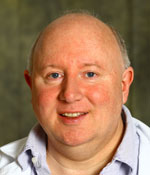
Calcium in cardiac cellular signaling and techniques to study cardiac cells in vivo
The Escobar laboratory has been involved in the development of new optical, spectroscopic and electrophysiological techniques for studying key aspects of striated muscle physiology. Some of these techniques, flash laser imaging and confocal spot detection, made it possible to define the spatial pattern of second messenger (i.e. Ca2+) distribution in striated muscle. In addition, along my career as an independent PI I have been interested in studying the relationship between electrical excitability and Ca2+ dynamics on intact beating hearts. Recently, my laboratory developed state-of-the-art techniques called Loose Patch Photolysis and Florescence Local Field Optical Mapping that allows the measurements of Ionic Currents and Ca2+ spatial distribution in the intact heart.
Selected Publications:
- Ramos-Franco J, Aguilar-Sanchez Y, Escobar AL. Intact Heart Loose Patch Photolysis Reveals Ionic Current Kinetics During Ventricular Action Potentials. Circ Res. 2016 Jan 22;118(2):203-15. doi: 10.1161/CIRCRESAHA.115.307399. PMID:26565013
- Mattiazzi A, Argenziano M, Aguilar-Sanchez Y, Mazzocchi G, Escobar AL. Ca2+ Sparks and Ca2+ waves are the subcellular events underlying Ca2+ overload during ischemia and reperfusion in perfused intact hearts. J Mol Cell Cardiol. 2015 Feb;79:69-78. doi: 10.1016/j.yjmcc.2014.10.011. PMID:25451173
- Kornyeyev D, Petrosky AD, Zepeda B, Ferreiro M, Knollmann B, Escobar AL. Calsequestrin 2 deletion shortens the refractoriness of Ca²⁺ release and reduces rate-dependent Ca²⁺-alternans in intact mouse hearts. J Mol Cell Cardiol. 2012 Jan;52(1):21-31. doi: 10.1016/j.yjmcc.2011.09.020. PMID:21983287

